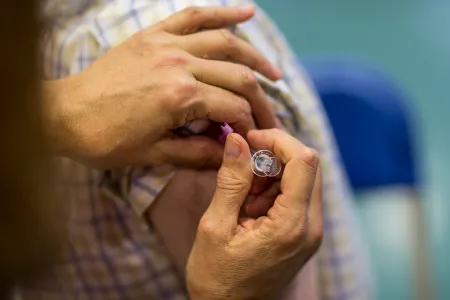We don’t have a vaccine yet to prevent COVID-19. However, there are many strategies we can use as alternative forms of defense, such as wearing a face covering properly, keeping six feet of physical distance from others, practicing good hand hygiene, and making decisions to avoid high- risk activities like gatherings and unnecessary travel. These are simple but effective strategies that make it more difficult for COVID-19 to pass from one person to another.
October is the ideal time to get your flu vaccine. It takes about two weeks for antibodies to develop in your body after the vaccination. Getting it now means that your body will be ready and at full strength once flu season begins to peak in early winter.
Here on campus, we will be offering the flu vaccine while our supplies last during our COVID-19 surveillance testing that is occurring on Tuesday, October 13 and Wednesday, October 14 at the Athletics & Events Center. Employees approved to access campus and all students in the Ithaca area can get a flu vaccine immediately after you complete your COVID-19 testing. Individuals who plan to participate in the flu shot should print and complete the influenza vaccination form.
Employees not approved to access campus who have the Ithaca College Health Plan through Aentna can obtain a free flu vaccine at a variety of locations. Students can also contact Hammond Health Center at (607) 274-3177 to schedule their flu vaccine.
For our students and families afar, getting your flu vaccine at home is a great step you can take now to prepare for your spring return to campus. It is another critical preventive measure to protect your own respiratory health this winter, and it also helps in our common goal of fighting against COVID-19.
Let’s keep our numbers low, and our spirits high!
Sincerely,
Christina Moylan, Ph.D.
Director of Public Health Emergency Preparedness
